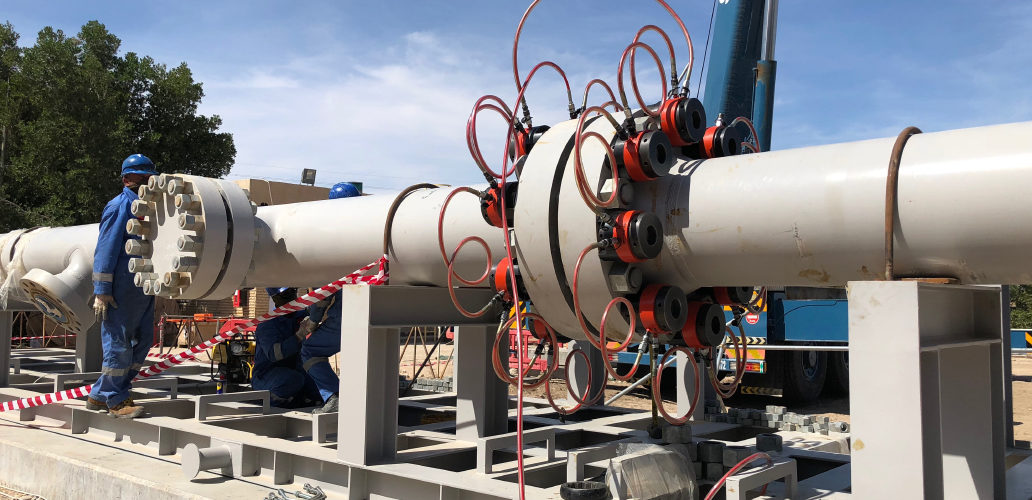- Home
- What We Offer
- Services
- EPC Projects
- Process Piping Projects
- Pipelines Projects
- Wellheads Hook Up and Tie-in
- Flange Management Work
- Inspection & NDT & Hydrostatic Test
- Storage Tanks
- Vessels
- Manifolds Erection & Dressing
- External Coating & Internal Lining
- Insulation
- Trenchless Crossing ( Auger Boring)
- Electrical & Instruments
- Civil Work
- Survey Works
- Projects
- Gallery
- Our Partners
- About us
- Careers
- Contact Us

Flange Management Work
BACO has a range of flange tools being purchased to assist in all flange joint. Our professional, skilled & certified teams are effectively managing bolt assembly and tightening using manual and powered tools to apply a specific and controlled torque & tension to studs, bolts and cap screws by applying the correct value for a specific bolting material, size and type of lubrication. Powered tools are normally powered by pneumatic or electrical source and operate by console (hydraulic pump). The desired tension is achieved by precisely controlling the hydraulic fluid pressure produced by the console and controlling the frictional force exerted between the studs and nuts. The hydraulic fluid pressure produced by the console is accurate to +/- 1%. The friction force is controlled by applying a lubricant with a known coefficient of friction to the threads and mating surfaces. Our range of tools are;

Torque Wrenches (Manual and Powered)
Torque wrenches provide this tension by controlling the amount of rotational force they apply to the bolt. As the force is applied threading, draws the nut face and bolt head closer together, stretching the bolt and creating the clamping force. This is the most common form of providing load to a bolt. For high clamping force a large amount of torque is needed; hydraulic wrenches can provide this force. Therefore, there are standard torque tables available, which provide guidance for determining the correct amount of torque to be used for a particular size, grade of bolt and lubricant.

Bolt Tensioners
Bolt tensioners work by preloading the bolt, stretching it before the nut is tightened. The tensioner is clamped to the bolt’s threads and pushes against the flange in the surface being bolted. This provides a very consistent amount of stretch to the bolt, ensuring consistent bolt stretch and clamping force. The drawback to bolt tensioners is that they must be selected specified to each application, much more data must be compiled and considered in the selection of a tensioner.

Flange Separator
These tools are used to increase the spreading distance on each step while gaining easier access between any remaining stud-bolts within the flange joint. It is used in normal maintenance and installation procedures, and allow the spreading of flanges with an access gap of 6 mm (0.24”) or greater. For example, they may be used to assist in the replacement of the ring and other type joints.

Flange Pulling
Flange Hydraulic Closing Tool has been used to pull flanges together during installation or maintenance. It can be used on any flange with a bolt hole diameter of 22mm (7/8”) or greater.

Flange Alignment
Hydraulic Flange Alignment, Linear & Rotational tools can be used to align or re-align flange joints during pipework construction, commissioning or during routine maintenance. The tool is attached to the flange joint where misalignment is at its greatest and then simply push and pull the flanges into correct alignment.